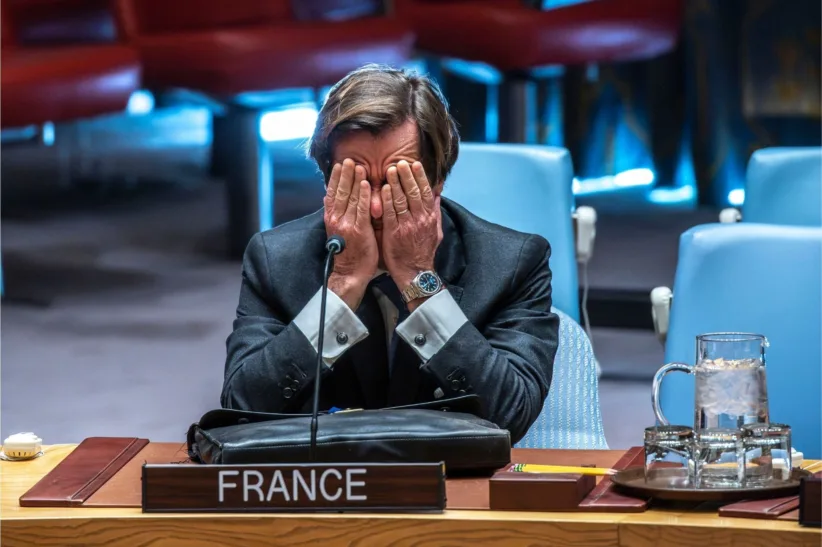The obligation to eliminate nuclear weapons
Events in 2024 again showed that the conduct of all nuclear-armed states is incompatible with the Treaty on the Prohibition of Nuclear Weapons’ (TPNW) obligation to eliminate nuclear weapons. While all nuclear armed states have expressed their support for nuclear disarmament, they are not pursuing this goal. They argue that this process requires creating a suitable environment first.

In March 2024, the UN Security Council held a rare high-level meeting on nuclear disarmament and non-proliferation, which was chaired by Japan. UN Secretary-General António Guterres stated at the meeting that ‘There is one path— and one path only—that will vanquish this senseless and suicidal shadow, once and for all. We need disarmament now.’ He also said that ‘States possessing nuclear weapons are absent from the table of dialogue. Investments in the tools of war are outstripping investments in the tools of peace. Arms budgets are growing, while diplomacy and development budgets are shrinking.’ He urged nuclear-armed states to act to implement existing disarmament commitments under the Treaty on the Non-proliferation of Nuclear Weapons (NPT), including reductions in the number of nuclear weapons ‘led by the holders of the largest nuclear arsenals – the United States and the Russian Federation’.
In the ‘Pact for the Future’ adopted by the 2024 UN Summit of the Future, states reiterated their ‘concern’ about ‘the state of nuclear disarmament’ and decided to ‘recommit to the goal of the total elimination of nuclear weapons’ and to ‘seek to accelerate the full and effective implementation of respective nuclear disarmament and non-proliferation obligations and commitments.’ However, the final consensus text was vague on specific commitments compared to earlier drafts that contained calls for more specific actions by nuclear-armed states.The only forum where nuclear-armed states continue to discuss issues related to nuclear disarmament is the P5 group of NPT nuclear weapon states. The United States has put forward a set of proposals designed to reduce nuclear risks for discussion by the group. Key among these are the formalisation of a missile launch notification regime and the establishment of dedicated crisis communication channels. While these initiatives can help reduce nuclear risks and can potentially create conditions for further progress, they do not directly contribute to nuclear disarmament.
For more information on the TPNW’s obligation to eliminate nuclear weapons, see the 2024 edition of the Nuclear Weapons Ban Monitor.
ARTICLE 4(1), (2), AND (6) – INTERPRETATION
- In accordance with Article 4(6) of the TPNW, the states parties are explicitly obligated to designate a ‘competent international authority or authorities’ to negotiate and verify the irreversible elimination of nuclear weapons programmes.
- The TPNW provides two pathways to the future adherence of nuclear-armed states: one for so-called destroy-and-join states (‘Article 4(1) states’) and a second for so-called join-and-destroy states (‘Article 4(2) states’).
- Article 4(1) obligates each nuclear-armed state that destroys its nuclear weapons and eliminates its nuclear-weapons programme before adhering to the TPNW, to cooperate with the ‘competent international authority’ that states parties will designate to verify nuclear disarmament, in order to ascertain that its nuclear-weapon programme has been irreversibly eliminated.
- Article 4(2) obligates those nuclear-armed states that decide to adhere to the Treaty before completing nuclear disarmament to immediately remove the weapons or devices from operational status and to destroy them as soon as possible but not later than the deadline of ten years determined by the First Meeting of States Parties in 2022. The process of destruction must be detailed in a legally-binding, time-bound plan that provides for the verified and irreversible elimination of that state party’s nuclear-weapons programme, including the elimination or irreversible conversion of all nuclear-weapons-related facilities. Such a state must submit a draft of the plan to the other states parties or to the competent international authority within 60 days of becoming a party. The plan must then be negotiated with this authority and submitted to the next meeting of states parties or review conference, whichever comes first, for approval.
- Article VI of the NPT requires that the states parties to the Treaty, including the five nuclear-weapon states parties ‘pursue negotiations in good faith’ on nuclear disarmament. The TPNW is one avenue by which any nuclear-armed state can effectively pursue nuclear disarmament.